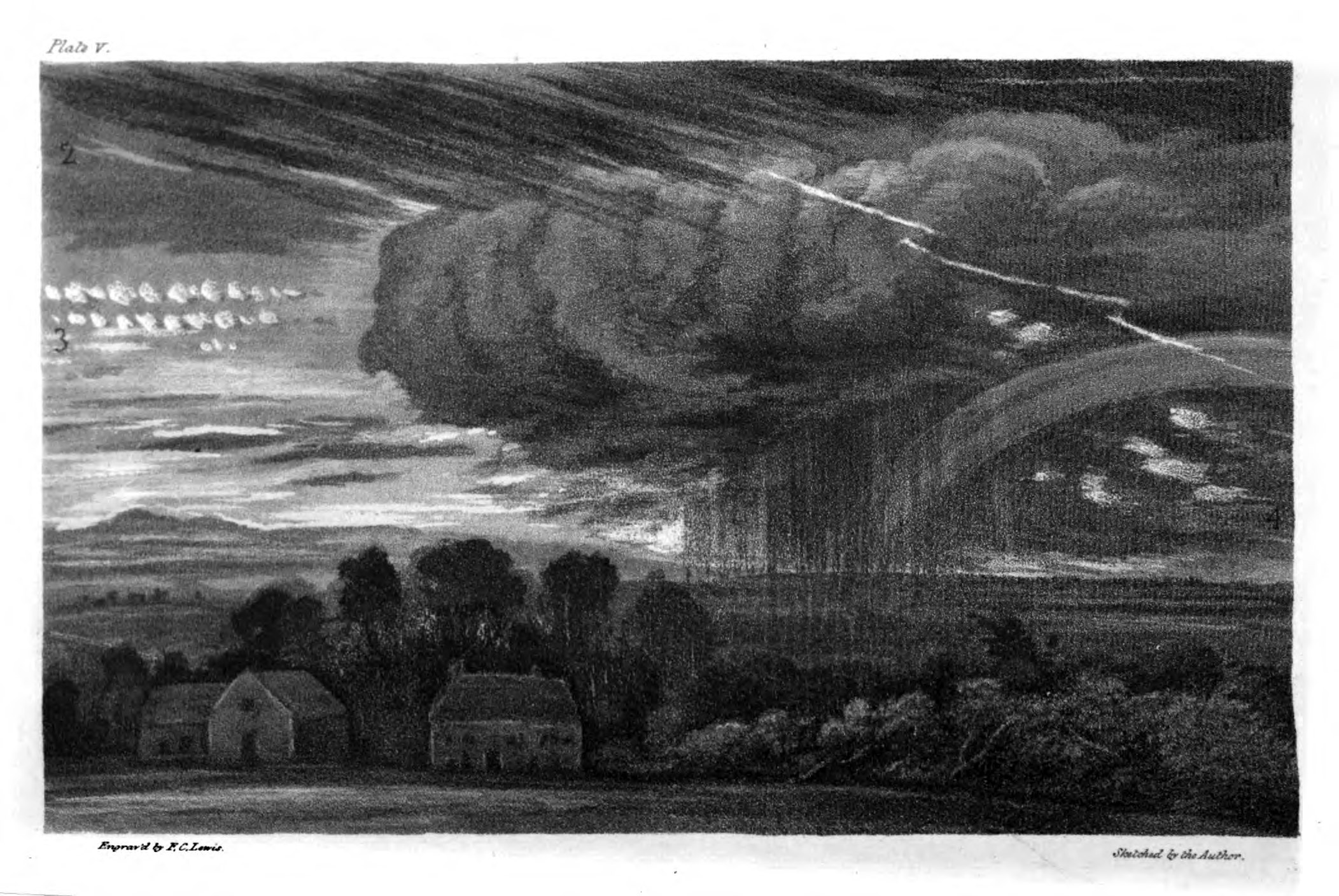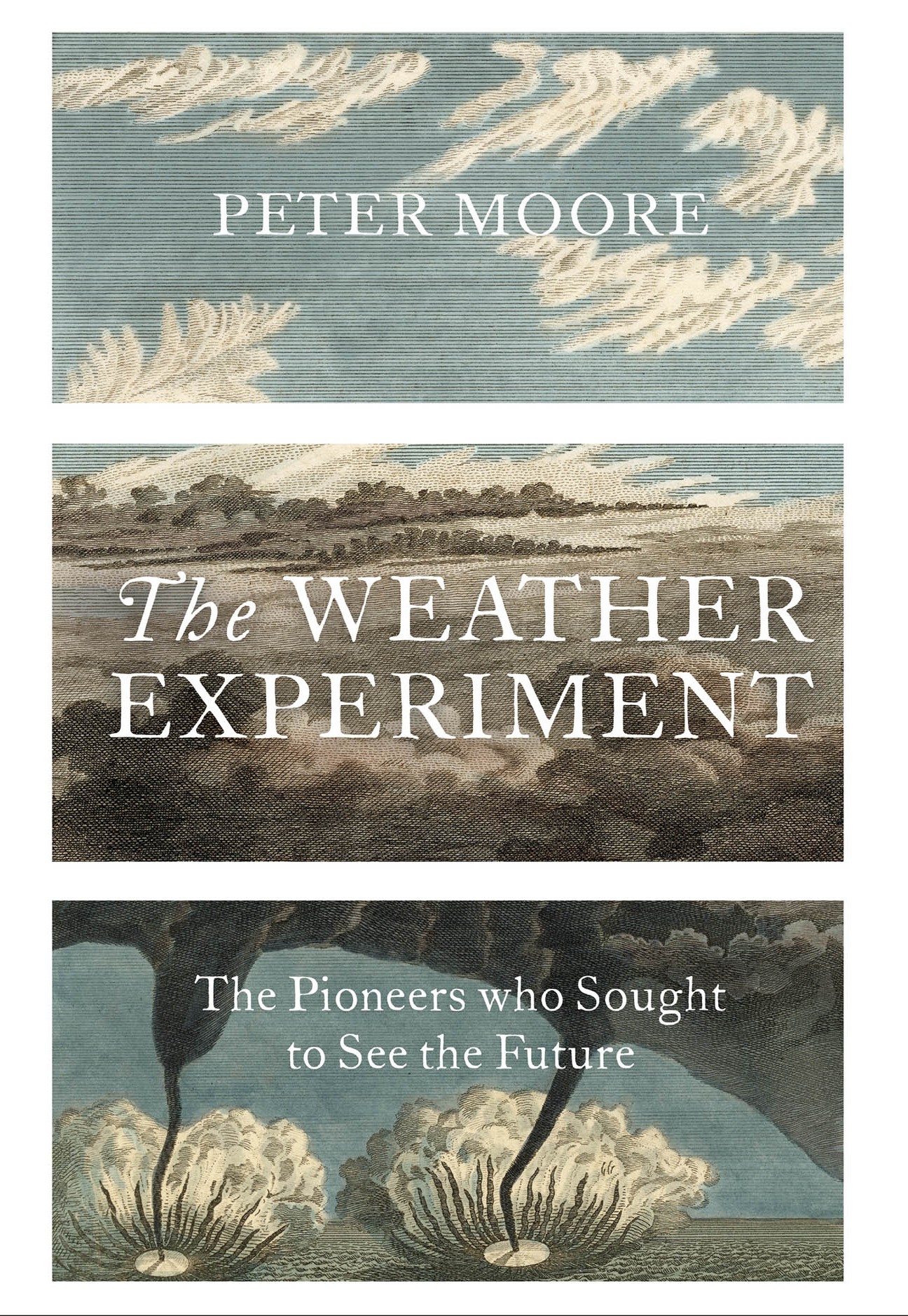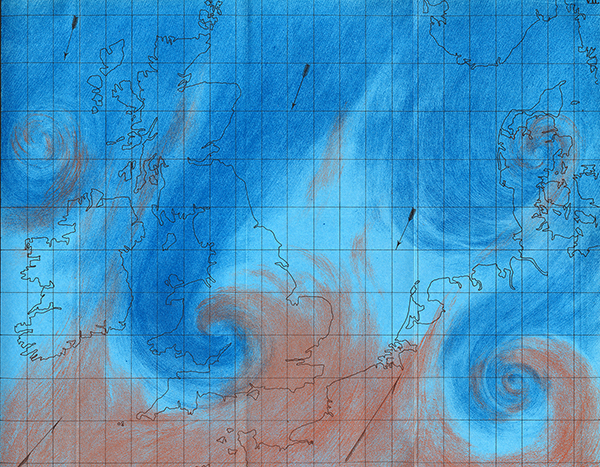By Peter Moore (Guest Contributor)

Sketch by Thomas Forster
In the year 1800 the sky remained an unknowable blue wilderness. No one knew how far up the atmosphere went or how clouds remained suspended in the air. People had not explained how a storm operated or where dew came from or why the sky was blue. In all, meteorology remained a strange and obscure science, little advanced from the time of Aristotle and his concept of “meteors”.
Yet in just seventy years there was a revolution in the subject. Once so fraught with mystery that it was considered by many to be the graveyard of a philosophic reputation, in a few decades meteorology reinvented itself as a modern science. In 1803 names were assigned to the clouds for the first time by Luke Howard, a London chemist. In 1806 a sailor called Francis Beaufort jotted down a quantifiable scale for wind which has survived to this day.
In America theorists like William C. Redfield and James P. Espy developed revolutionary new ideas to explain the movement of storms up the vulnerable eastern coast. By the 1840s all these ideas were knitted together by a revolutionary new technology: Samuel Morse’s Electo-Magnetic Telegraph. Soon meteorology was in vogue. In London John Ruskin wrote that the science was “full of the soul of the beautiful”.
This book tells the stories of the little, individual experiments. There is John Constable, the landscape painter, on Hampstead Heath straining to sketch the passing clouds. There is James Espy in Fairfax County, Virginia, setting fire to a pine forest in a bid to make rain. Out in the grounds of the Royal Observatory in Greenwich, England, a young scientist called James Glaisher lies flat in the grass at night measuring the growth of a drop of dew.
Meanwhile in the Caribbean Islands a man watches as the atmosphere shifts. The skies have turned a fierce, lurid red. Olive clouds scud overhead, a swell stirs in the harbour, the breeze freshens. He watches his barometer dip. A storm is on its way.
These are the little experiments. And drawn together they combine to create what I had come to think of as a generational experiment. The hypothesis of this might be: “That the atmosphere is not chaotic beyond understanding, that it can be measured and understood and even predicted.” This, therefore, becomes “The Weather Experiment” and prediction is at the heart of the story as it became one of the dilemmas of the age.
If a scientist knows that a storm – or worse – is on the way, then do they not have a duty to warn people? This scientific conundrum shadows the story, which ends with one of the great controversies of Victorian science: Robert FitzRoy’s first forecasts of the 1860s.
 Peter Moore is an English historian. He lives in London and teaches non-fiction creative writing at City University. He has published two books, an acclaimed history of a double murder, Damn His Blood, and his most recent The Weather Experiment.
Peter Moore is an English historian. He lives in London and teaches non-fiction creative writing at City University. He has published two books, an acclaimed history of a double murder, Damn His Blood, and his most recent The Weather Experiment.

